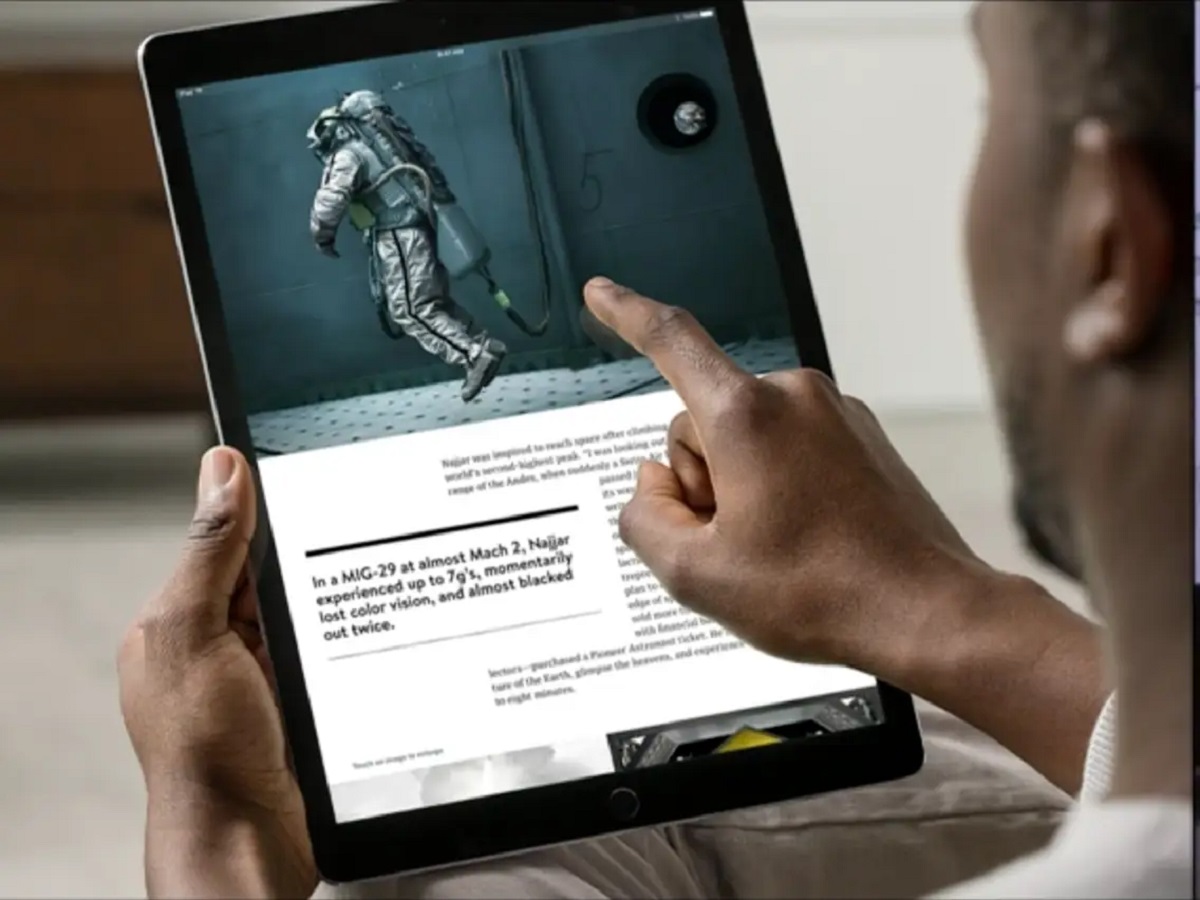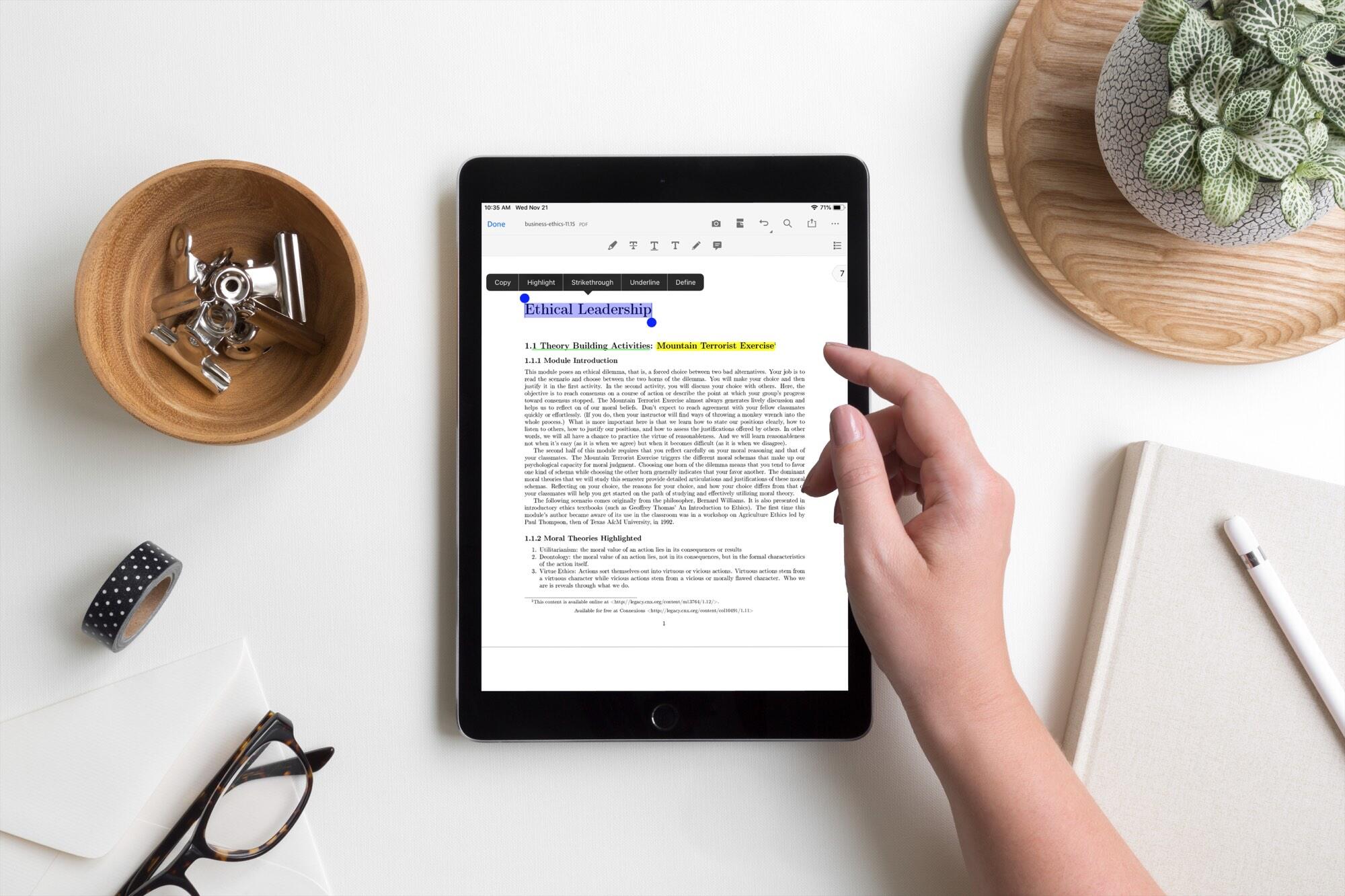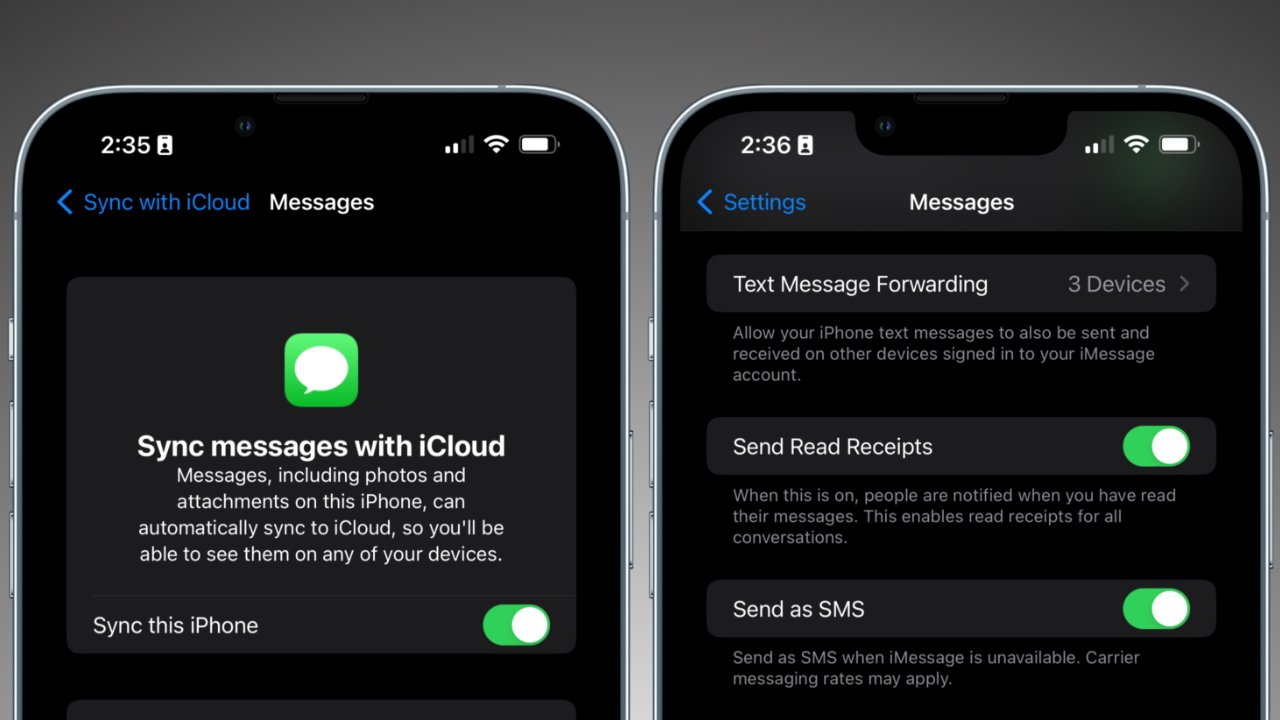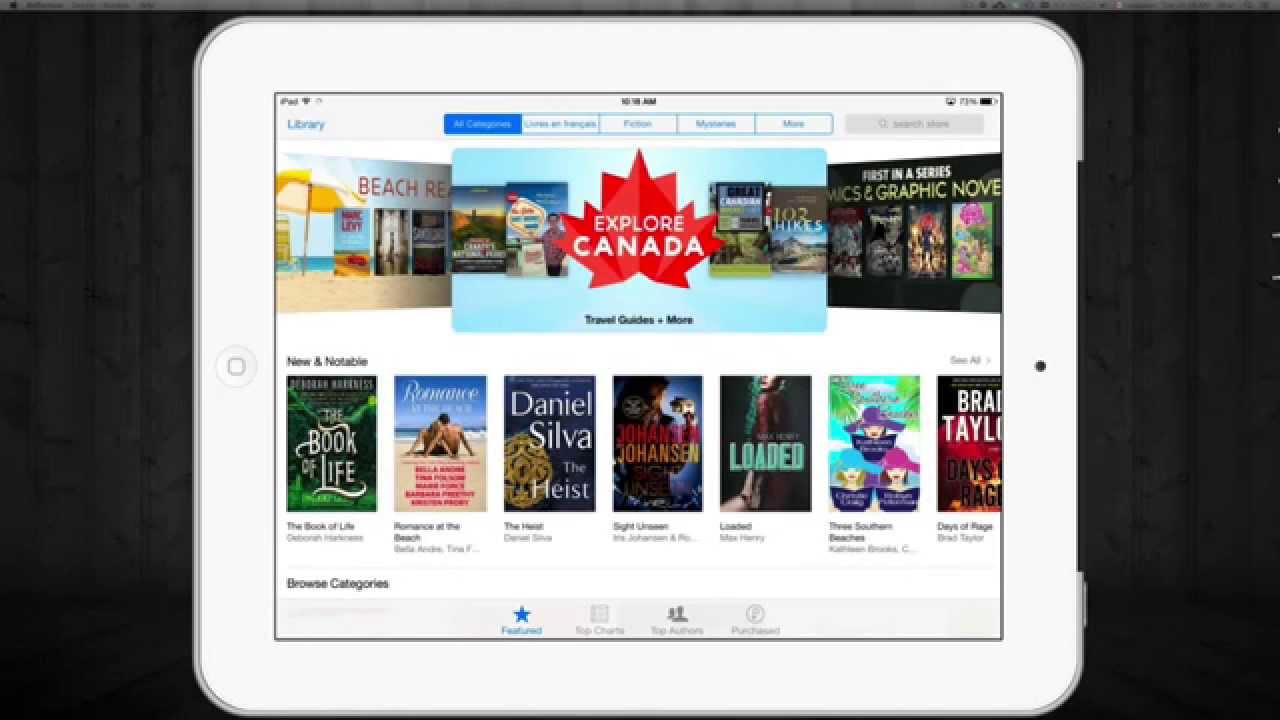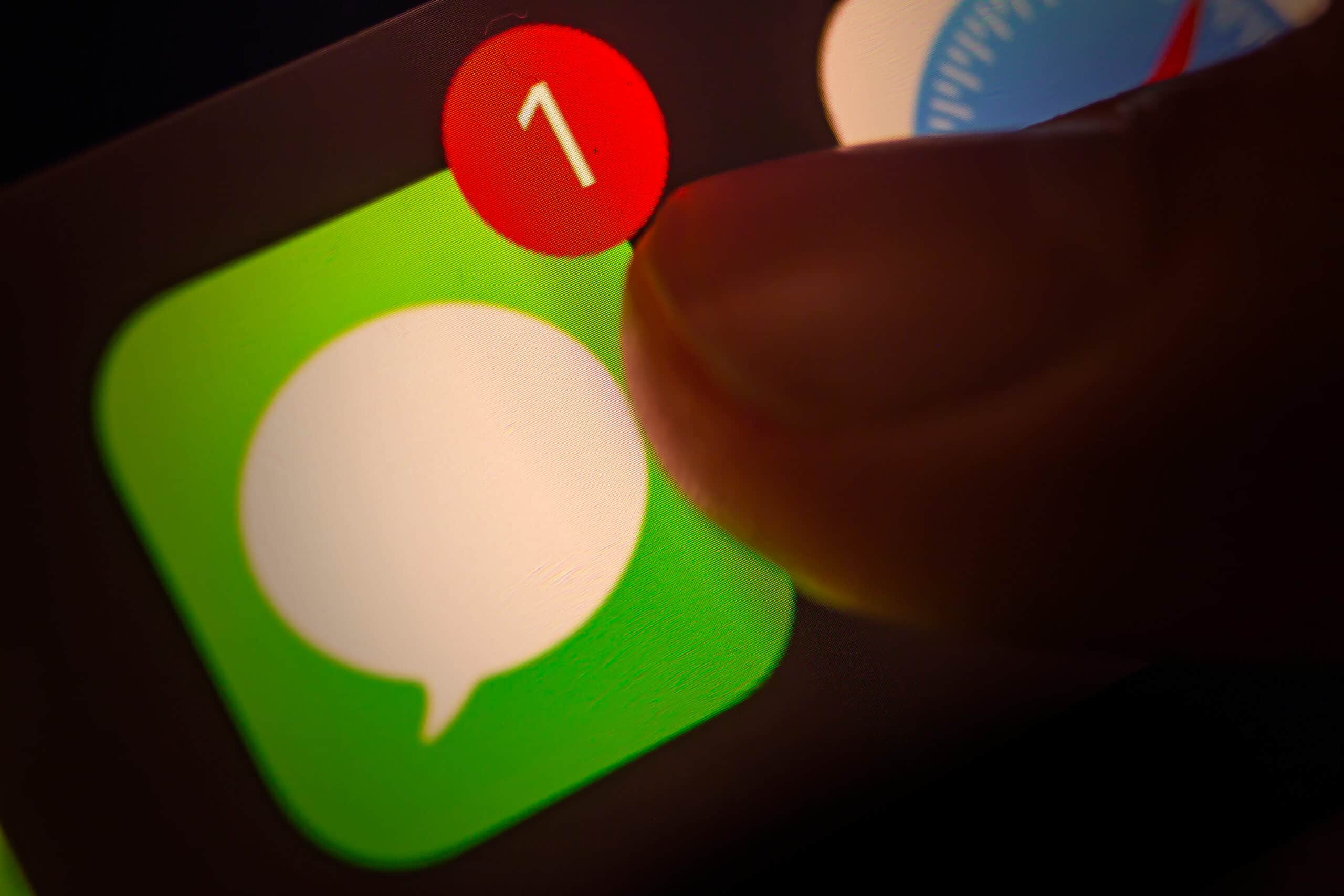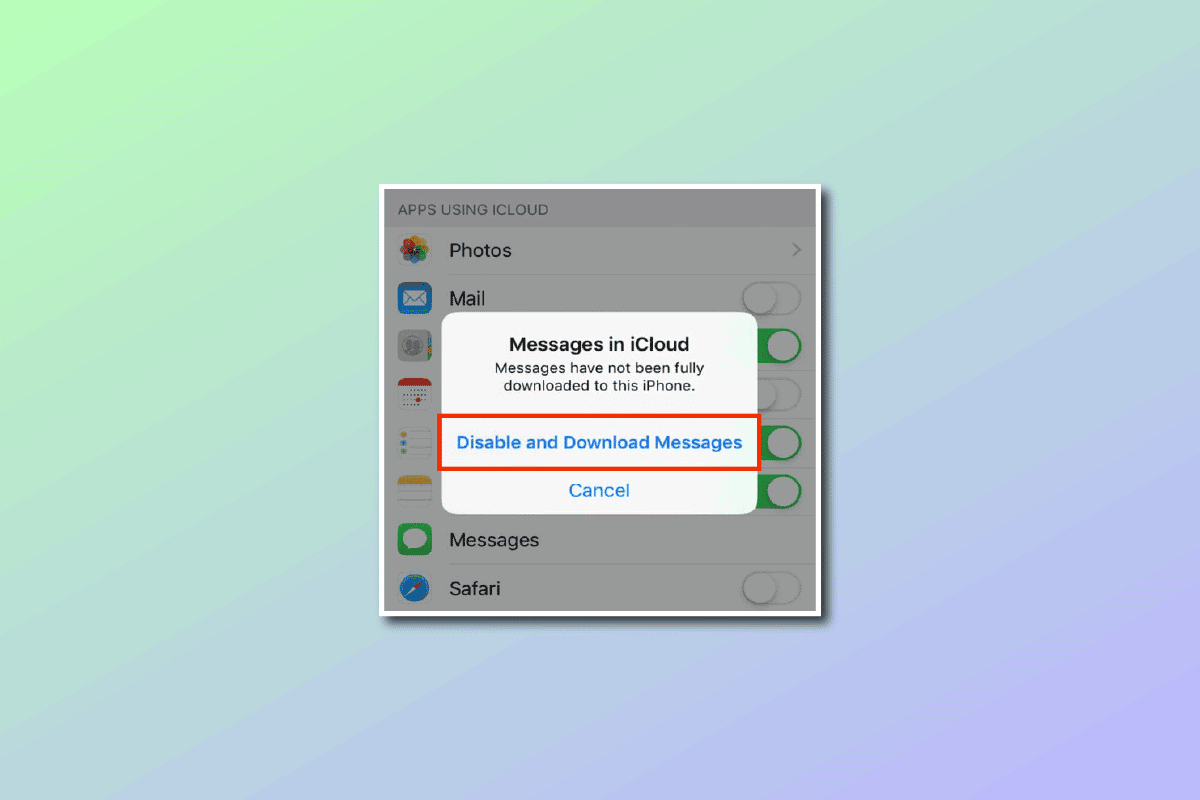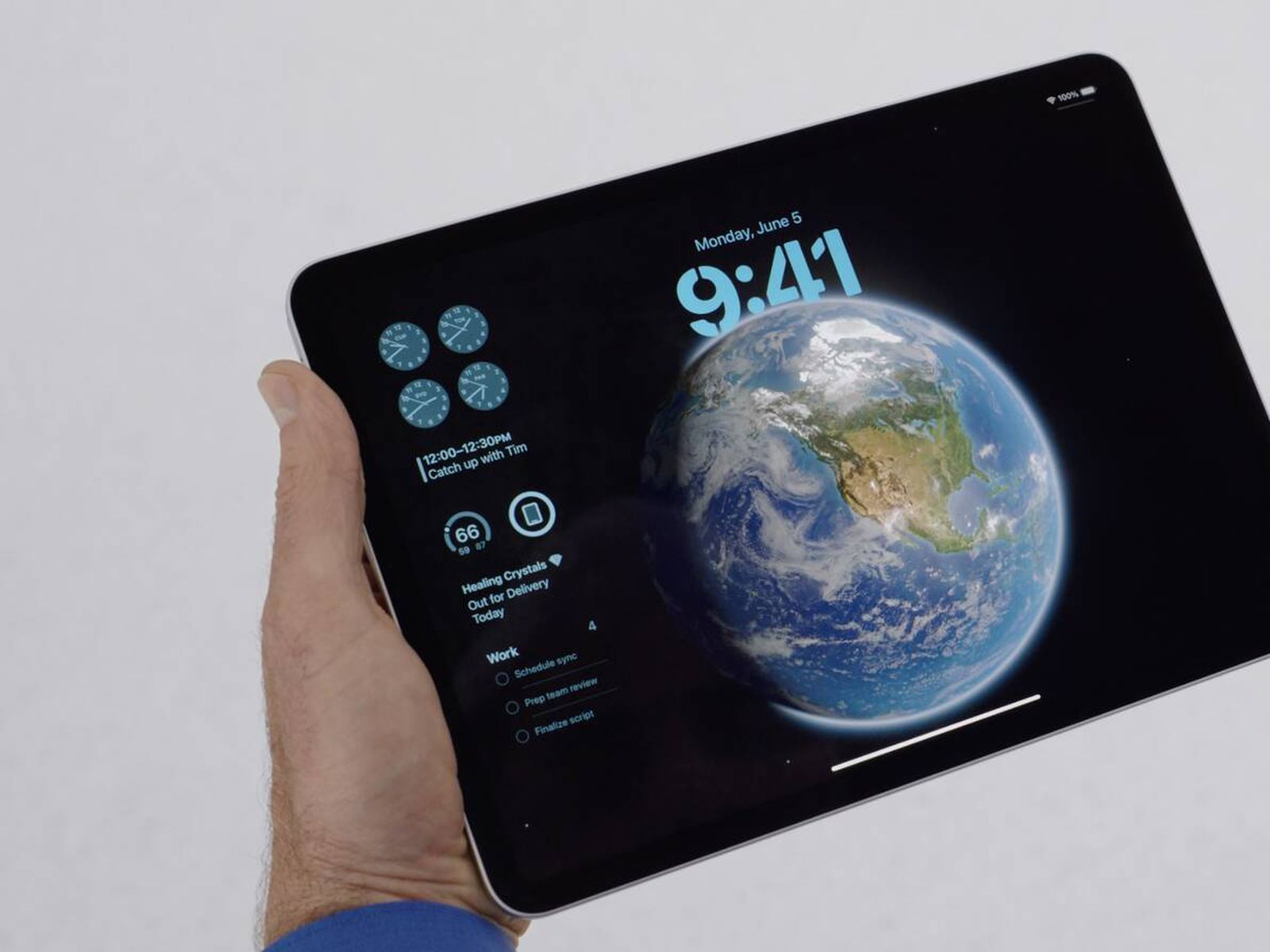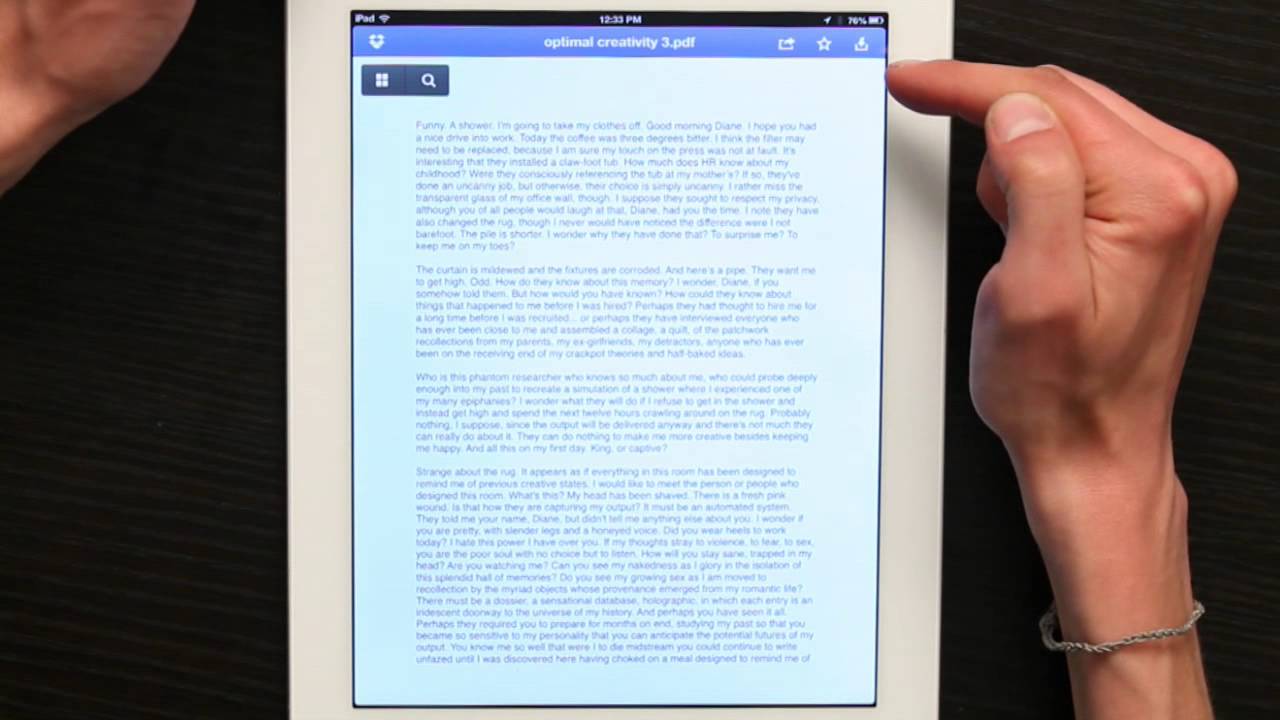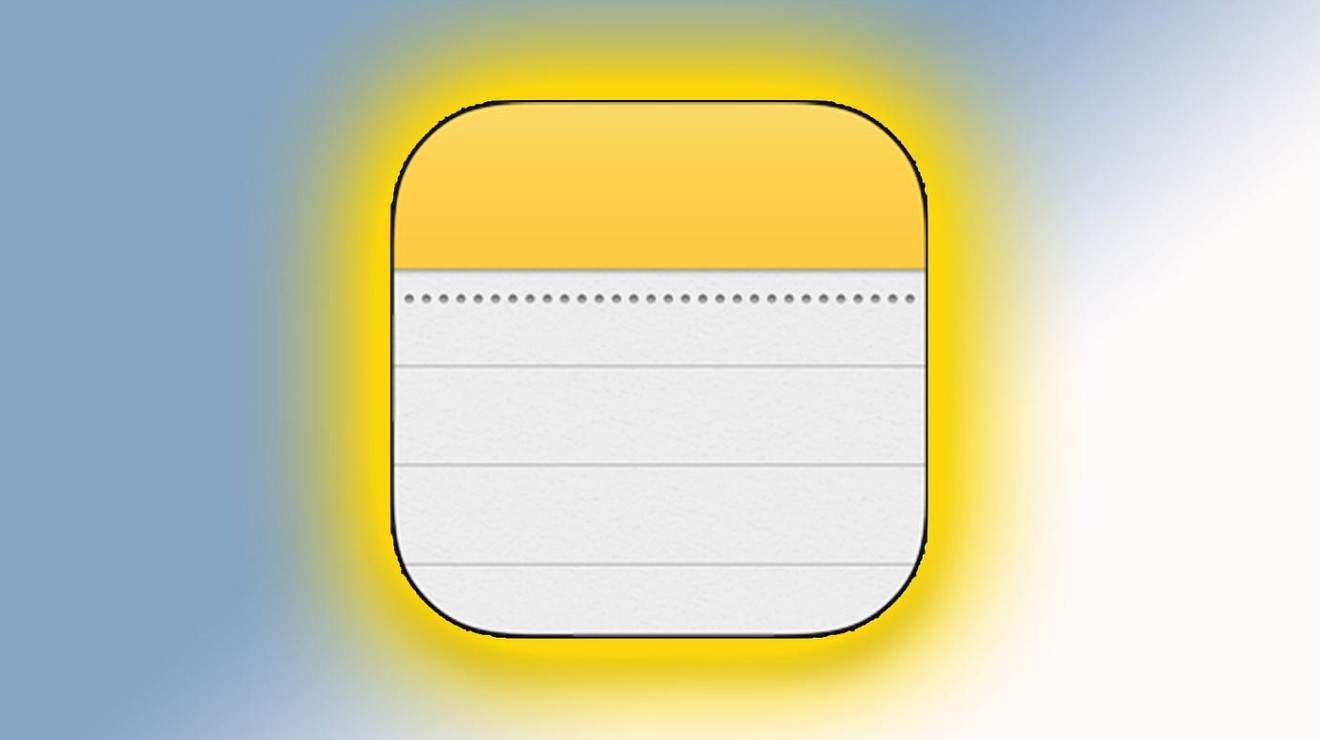Introduction
Welcome to the world of iPad, where you can do so much more than just browsing the internet and playing games. One of the many functionalities of an iPad is the ability to download and read PDF files. PDF files are widely used for documents, books, and various types of content that need to be preserved in a fixed layout. Whether you need to access a work document, read an e-book, or view a presentation, downloading PDFs on your iPad is quick and easy.
In this article, we will guide you through the step-by-step process of how to download a PDF on your iPad. Whether you are a seasoned iPad user or new to the device, these instructions will help you get your hands on PDF files and enjoy them on your iPad.
From finding the right PDF reader app to accessing your downloaded files, we will cover everything you need to know. So, grab your iPad and let’s get started!
Step 1: Open the App Store
The first step to downloading PDFs on your iPad is to open the App Store, which is where you can search for and download apps for your device. The App Store icon is usually located on your iPad’s home screen, represented by a blue icon with a white letter “A” inside a white circle.
To open the App Store, simply tap on its icon. You will be taken to the App Store’s main page, where you can explore various apps and categories.
Once you are on the App Store, you will have access to a wide range of apps, including PDF reader apps. These apps are designed specifically for reading and managing PDF files on your iPad. There are several free and paid options available, each with its own set of features and user interface.
Before moving on to the next step, it’s essential to have a PDF reader app installed on your iPad. This app will be your go-to tool for downloading and reading PDF files. So, take your time to explore the available options, read reviews, and choose an app that suits your needs.
Once you have decided on a PDF reader app, it’s time to move on to the next step: downloading the app onto your iPad.
Step 2: Search for a PDF reader app
Now that you’re in the App Store, it’s time to search for a PDF reader app that you want to download on your iPad. To start the search, locate the search bar at the top of the App Store screen. It is represented by a magnifying glass icon.
Tapping on the search bar will bring up the virtual keyboard, allowing you to enter your search query. Type in “PDF reader” or the name of a specific PDF reader app that you want to explore.
As you type, the App Store will start displaying suggestions and search results. The suggestions can be helpful if you’re not sure which PDF reader app to choose. Alternatively, you can tap on the “Search” button on the keyboard to see the full list of search results.
Browse through the search results to find the PDF reader app that fits your requirements. Pay attention to the app’s ratings, user reviews, and description to get an idea of its features and performance.
Keep in mind that there are both free and paid PDF reader apps available, each with its own set of features. If you’re on a budget, you can opt for a free app that meets your needs. However, if you require advanced features or a specific set of functionalities, you may need to consider a paid app.
Once you’ve decided on a PDF reader app, it’s time to move on to the next step: downloading the app onto your iPad.
Step 3: Choose and download a PDF reader app
After you have found the PDF reader app that you want to use, it’s time to download and install it on your iPad. Simply tap on the app’s icon or name to access its download page.
On the download page, you will find more information about the app, including screenshots, ratings, and reviews. Take a moment to review this information to ensure that the app meets your needs.
If you’ve decided to proceed with the app, look for the “Get” or “Download” button. The wording may vary depending on the version of iOS you have on your iPad. Tap on this button to initiate the download process.
At this point, you may be prompted to enter your Apple ID password or use Touch ID/Face ID to authenticate the download. This step ensures the security and authenticity of the app installation.
Once the download is complete, the app will be automatically installed on your iPad. You can find the app on your home screen or in your app library, depending on your iPad’s iOS version.
Now that you have successfully installed the PDF reader app, you are ready to move on to the next step: opening the app and preparing to download your desired PDF files.
Step 4: Open the PDF reader app
Now that you have downloaded and installed the PDF reader app on your iPad, it’s time to open the app and get ready to download and view PDF files. Locate the app’s icon on your home screen or in your app library and simply tap on it to launch the app.
Upon opening the PDF reader app, you will be greeted with a user-friendly interface designed specifically for reading and managing PDF files. The exact layout and features may vary depending on the app you have chosen, but most PDF reader apps provide similar functionalities.
Once the app is open, take a moment to familiarize yourself with its main features, such as the navigation menu, search bar, and file library. Some apps may also offer additional tools like annotation options, bookmarking, or syncing capabilities with cloud storage platforms.
To ensure a seamless reading experience, it’s recommended to customize the app’s settings according to your preferences. This may include adjusting the font size, enabling night mode, or selecting the default view mode for PDF files.
With the PDF reader app now open and ready, you’re one step closer to downloading and accessing your desired PDF files on your iPad. The next step will guide you through the process of navigating to the website where the PDF file is located.
Step 5: Navigate to the website with the PDF you want to download
Now that you have opened the PDF reader app, it’s time to navigate to the website where the PDF file you want to download is located. There are several ways to access the website, such as typing the URL directly or using search engines. Follow these steps to find the website:
- Open the web browser within the PDF reader app. Most PDF reader apps come with a built-in web browser for easy access to online content.
- Tap on the address bar at the top of the browser screen.
- Type in the URL of the website that hosts the PDF file you want to download. Make sure you enter the correct web address to avoid any errors.
- Alternatively, you can perform a web search using a search engine like Google. Simply type in relevant keywords related to the PDF file you want to download, and browse through the search results to find the webpage.
- Tap on the search result or the URL in the address bar to access the webpage.
Once you are on the webpage, you will be able to see the content it offers, including the PDF file you want to download. The next step will guide you in finding the download link for the PDF file.
Step 6: Find the PDF download link
After navigating to the webpage where the PDF file is located, your next task is to find the download link for the PDF file. The download link is usually indicated by a button, text link, or an embedded icon on the webpage. Follow these steps to find the PDF download link:
- Scan the webpage for any visible links or buttons that might lead to the download. Look for phrases like “Download PDF” or “Save PDF” that are often used to label the download link.
- If you’re unable to spot a direct download link, consider checking the webpage’s content or navigation menu. Sometimes, website owners might place the PDF files within specific sections or categories.
- In some cases, the download link may be hidden behind a certain action, like clicking on an image or a text block. Look for any interactive elements that could trigger the download process.
- Pay attention to any tooltips, hover effects, or pop-up notifications that might provide additional clues or instructions on how to download the PDF file.
- If you’re still having trouble finding the download link, you can try using the browser’s search function. Press the “Ctrl + F” keys on a physical keyboard or access the search option through the browser’s menu. Enter keywords like “PDF” or “download” to highlight any relevant instances on the webpage.
Once you have identified the PDF download link, you are now ready to proceed to the next step: tapping on the download link to start the download process.
Step 7: Tap on the download link
Now that you have located the download link for the PDF file on the webpage, it’s time to initiate the download process. Tapping on the download link will prompt your iPad to begin downloading the PDF file. Follow these steps to tap on the download link:
- Position your finger or stylus over the download link on the webpage.
- Note that the download link can be in the form of a button, text link, or an embedded icon.
- Tap on the download link to initiate the download process.
- You may see a confirmation message or prompt asking for your consent to download the file. Confirm the download by tapping on “Yes” or “Download” when prompted.
- Depending on the size of the PDF file and the speed of your internet connection, the download process may take a few seconds or longer. Be patient and wait for the download to complete.
- Once the download is finished, you will usually receive a notification or see a progress indicator confirming the successful download of the PDF file.
Now that you have successfully tapped on the download link, the PDF file will be saved on your iPad and accessible through the PDF reader app. The next step will guide you on how to access and view your downloaded PDF file.
Step 8: Wait for the download to complete
After tapping on the download link for the PDF file, it’s important to be patient and wait for the download process to complete. The time it takes to download the PDF file will depend on various factors, such as the file size and the speed of your internet connection.
During the download process, you may see a progress indicator or a loading bar indicating the download’s progress. This visual indicator helps you track the progress and estimate how much longer the download will take. It’s important to note that larger files may take longer to download, so it’s best to be patient and avoid interrupting the process.
While waiting for the download to complete, it’s advisable not to navigate away from the webpage or close the PDF reader app. Doing so may interrupt the download and require you to start the process again.
Once the download is finished, you will typically receive a notification or see a message indicating the successful completion of the download. At this point, you can proceed to the next step and access your downloaded PDF file.
Now that you have waited for the download to complete, it’s time to move on to the next step and access your downloaded PDF file in the PDF reader app.
Step 9: Access your downloaded PDF in the PDF reader app
After the download is complete, it’s time to access and view your downloaded PDF file in the PDF reader app on your iPad. The following steps will guide you through the process:
- Return to the home screen of your iPad and locate the PDF reader app that you previously downloaded and installed.
- Tap on the PDF reader app icon to launch the app.
- Once the app is open, you will be presented with its main interface. Look for options like “Library” or “Files” to navigate to the section where your downloaded PDF files are stored.
- Within the app’s library or files section, you should be able to see a list of all the PDF files that you have downloaded to your iPad.
- Locate the downloaded PDF file that you want to access. You can scroll through the list or use the search function within the app to find the specific file.
- Once you have found the desired PDF file, tap on its title or the file thumbnail to open and view the PDF.
- The PDF reader app will open the PDF file, displaying its content on the screen. You can use various gestures and features within the app to navigate, zoom in or out, and interact with the PDF file.
Congratulations! You have successfully accessed your downloaded PDF file in the PDF reader app on your iPad. You can now enjoy reading, annotating, and exploring the content of the PDF file within the app.
Keep in mind that the PDF reader app may offer additional features and customization options to enhance your reading experience. Explore the app’s settings and menus to discover all the available functionalities.
Conclusion
Downloading and accessing PDF files on your iPad is a straightforward process that opens up a world of possibilities for reading and managing various types of content. By following the step-by-step guide outlined in this article, you can easily download PDF files on your iPad and enjoy them using a PDF reader app.
In this guide, we covered the essential steps from opening the App Store to finding and downloading a PDF reader app that suits your needs. We also explained how to navigate to the website hosting the PDF file, locate the download link, and initiate the download process. Finally, we discussed how to access the downloaded PDF file within the PDF reader app on your iPad.
Remember that there are numerous PDF reader apps available on the App Store, each with its own features and interface. Take the time to explore different apps, read reviews, and choose the one that offers the functionalities you require.
With your chosen PDF reader app installed on your iPad, you can easily download PDF files from websites and enjoy seamless reading experiences. Whether you need to access work documents, read e-books, or view presentations, downloading PDFs on your iPad allows you to have a portable and convenient way to access important content.
So, grab your iPad, follow the steps provided, and start downloading and enjoying PDF files on your device today!







